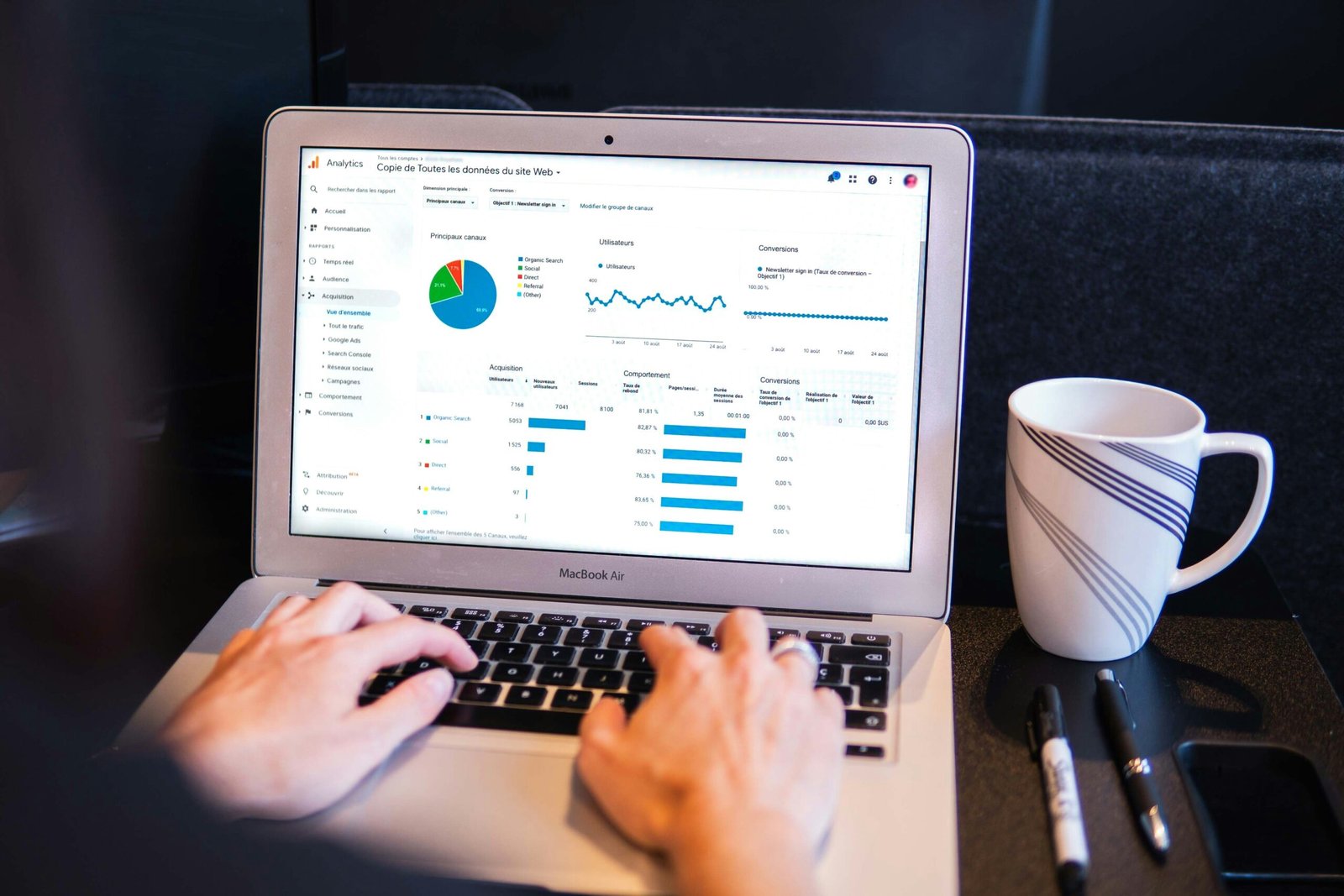The Importance of Email Marketing for B2B E-Commerce Brands
Introduction to Email Marketing in B2B E-Commerce
Email marketing has emerged as a crucial strategy within the landscape of B2B e-commerce, serving as a direct line of communication between businesses and their clients. This approach enables companies to deliver tailored content, engage in meaningful dialogues, and foster long-term relationships with their target audience. Over the years, email marketing has evolved significantly, shifting from simple promotional messages to more sophisticated campaigns that leverage data analytics, automation, and personalization.
In the context of B2B e-commerce, email marketing is not merely a tool for broadcasting updates or advertisements; it is an integral part of a larger marketing ecosystem. By utilizing segmented lists, brands can tailor their messages to address the specific needs and preferences of different customer groups. This targeted approach not only increases the likelihood of engagement but also enhances the overall customer experience. Businesses that implement effective email marketing strategies can expect to see improved open rates, click-through rates, and higher conversion rates, ultimately leading to increased sales and customer retention.
The digital marketplace is burgeoning with competition, and email marketing provides B2B brands with a distinct advantage. Through consistent outreach and engaging content, businesses can nurture leads through each stage of the buying process. Whether it involves sending welcome emails, product recommendations, or informative newsletters, email marketing allows brands to remain top-of-mind for potential clients. Furthermore, with the rise of automation and AI-driven tools, email campaigns can now be optimized and executed with greater efficiency than ever before.
As the landscape of digital marketing continues to evolve, the role of email marketing in B2B e-commerce remains vital. Its ability to connect brands with their audience while providing the necessary analytics to refine strategies makes it an indispensable asset for any success-oriented B2B e-commerce brand.
Understanding the Unique Challenges of B2B E-Commerce
B2B e-commerce brands face a constellation of challenges that set them apart from their B2C counterparts. One of the most significant of these challenges is the longer sales cycle. Unlike consumer purchases that can often be immediate, B2B transactions frequently involve meticulous deliberation and approval processes. Clients typically require more time to evaluate options, compare suppliers, and negotiate terms. As a result, establishing sustained communication is crucial, making effective email marketing an essential tool. By sending targeted, informative, and timely content, brands can maintain engagement throughout this prolonged decision-making period.
Another challenge inherent in B2B e-commerce is the necessity for relationship building. Business clients tend to value personal rapport and trust over transactional interactions. They are often looking for long-term partnerships rather than one-off purchases. Email marketing can facilitate this relationship-building process by providing consistent value, reinforcing the brand’s expertise, and customizing outreach based on the prospect’s specific needs. Through personalized emails, B2B brands can position themselves as trusted advisors, enhancing client confidence and encouraging loyalty.
Moreover, target audience segmentation is vital in B2B e-commerce. The diversity within B2B sectors means that companies must carefully segment their audience to tailor marketing strategies effectively. Segmentation based on factors such as industry, company size, or buyer behavior allows for more relevant and targeted messaging. Email marketing enables brands to segment their lists and craft content that resonates with specific audience subsets, improving engagement rates and conversion potential. By employing data analytics to inform segmentation, businesses can ensure their email campaigns address the unique pain points and goals of each group.
Building a Targeted Email List
In the realm of B2B e-commerce, the significance of building a targeted email list cannot be overstated. A well-curated email list not only enhances direct communication with potential clients but also drives customer engagement and conversion rates. This involves collecting emails from individuals and businesses that are truly interested in the products and services offered, rather than simply amassing a large number of contacts. Prioritizing quality over quantity ensures more meaningful interactions and a higher return on investment.
One effective approach to gain subscribers is through the implementation of lead magnets. These are valuable incentives offered to potential customers in exchange for their email addresses. Lead magnets can take various forms, such as eBooks, whitepapers, webinars, or exclusive industry insights. By providing valuable content that addresses specific pain points or interests of your target audience, you can attract qualified leads who are likely to engage with your brand.
Another strategy is the utilization of gated content. This involves creating premium content that requires users to submit their email addresses for access. By gating high-quality resources such as reports, case studies, or market analyses, B2B e-commerce brands can effectively filter prospects who are seriously interested in their niche. This method not only fosters a stronger relationship with potential customers but also contributes to valuable data collection for future marketing efforts.
Networking is yet another avenue to build a targeted email list. Attending industry conferences, webinars, and trade shows allows brands to connect directly with like-minded professionals. Collecting emails during these events fosters relationships that can lead to worthwhile business prospects. Additionally, partnering with other businesses or influencers in your industry can facilitate cross-promotions that introduce your brand to new audiences.
Crafting Effective Email Campaigns
For B2B e-commerce brands, creating effective email campaigns is essential in developing strong customer relationships and increasing conversion rates. One of the most critical elements in this process is the subject line. A compelling subject line captures attention and encourages recipients to open the email. It should provide a clear idea of the email’s content while stimulating curiosity. Utilizing action-oriented language and incorporating relevant keywords can further enhance its effectiveness. Experimenting with different subject lines and analyzing open rates can also provide insights into what resonates with your audience.
Personalization is another key component of successful email campaigns. By addressing recipients by their names and referencing their previous interactions or purchases, brands can create a more tailored experience. Leveraging customer data to segment your email list allows for more relevant content delivery. This tailored approach not only fosters engagement but also demonstrates that the brand values the recipient’s unique needs and preferences.
Creating valuable content is crucial in keeping recipients engaged. Emails should not only promote products or services but also provide insightful information that can assist B2B customers in their decision-making process. This content could include industry insights, product guides, or case studies, positioning your brand as a thought leader. A well-structured email, combining visuals with well-written text, can enhance readability and user engagement.
Finally, a strong call-to-action (CTA) is necessary to encourage recipients to take the desired action, whether it’s making a purchase, subscribing to a newsletter, or accessing additional content. The CTA should be clear, concise, and visually distinct, making it easily noticeable within the email. Utilizing actionable language such as “Get Started” or “Learn More” can help drive conversions. By focusing on these essential components, B2B brands can craft email campaigns that resonate with their audience and lead to meaningful engagement and increased sales.
Segmenting Your Audience for Better Results
Audience segmentation plays a crucial role in the effectiveness of email marketing for B2B e-commerce brands. By categorizing your audience into specific groups based on shared characteristics, businesses can tailor their messaging to resonate more deeply with recipients. This targeted approach not only enhances engagement but also increases conversion rates. To achieve optimum results, several segmentation strategies can be adopted, including demographic factors, purchasing behavior, and engagement levels.
Demographic segmentation involves classifying your audience based on attributes such as age, gender, income, and job role. This method allows marketers to address the unique needs and challenges associated with each demographic, ensuring that the email content is relevant and appealing. For instance, a marketing message highlighting cost-saving solutions may resonate more with budget-conscious decision-makers compared to those prioritizing innovative technologies.
Another effective strategy is to segment audiences by purchasing behavior. Analyzing past purchases enables brands to identify trends and tailor communications around products most likely to interest specific customers. For example, email campaigns can center on complementary products for customers who frequently purchase a particular item, thereby increasing cross-sell and up-sell opportunities. Additionally, segmenting based on purchase frequency can help you target lapsed customers with incentives to re-engage.
Lastly, engagement level segmentation is vital for optimizing email marketing campaigns. By categorizing subscribers based on their interaction history—such as email opens, clicks, or conversions—brands can create custom campaigns that speak directly to those who actively engage as well as those who exhibit lower engagement levels. For example, highly engaged users may receive exclusive offers, while less active subscribers can be sent personalized content designed to rekindle interest.
By implementing these segmentation strategies, B2B e-commerce brands can enhance their email marketing effectiveness, driving higher engagement and conversion rates through more personalized and relevant messaging.
Measuring Success: Key Metrics for B2B Email Marketing
In the realm of B2B e-commerce, understanding the efficacy of email marketing campaigns is crucial for driving engagement and achieving business goals. For brands looking to optimize their marketing strategies, monitoring key metrics associated with their email efforts is necessary for gauging success and refining future campaigns. Among the most important metrics to track are open rates, click-through rates, and conversion rates.
Open rates represent the percentage of recipients who open an email, and they serve as a foundational indicator of subject line effectiveness and overall audience interest. A higher open rate implies that the subject line resonates with the target audience, which can lead to better engagement as recipients delve into the content. To enhance this metric, brands should consider A/B testing subject lines and investing time in list segmentation to ensure emails are tailored to specific audience interests.
Next, the click-through rate (CTR) gauges how many recipients clicked on links within the email. This metric not only reflects the effectiveness of the email’s content and call-to-action (CTA) but also indicates how compelling the offer or information presented is to the audience. A low CTR often suggests the need for clearer CTAs or a reevaluation of content relevance.
Conversion rates are another critical measure, showcasing the percentage of email recipients who take a desired action, such as completing a purchase or signing up for a webinar. This metric directly relates to the overall effectiveness of the email campaign in meeting specific business objectives. Tracking conversion rates helps brands understand which elements of their campaigns are performing well and which may require adjustments.
To monitor these key performance indicators (KPIs), various tools such as Google Analytics, Mailchimp, and HubSpot provide valuable insights. These platforms enable businesses to track the progression of their email campaigns and make data-driven decisions to boost their B2B e-commerce success.
Automation in Email Marketing
Automation in email marketing has become a vital tool for B2B e-commerce brands looking to enhance their operational efficiency and effectiveness. The incorporation of automated workflows allows brands to deliver personalized and timely communication to their audience, ultimately improving user engagement and fostering stronger relationships with potential clients. By leveraging automation, businesses can streamline their email marketing processes, thereby reducing manual effort while increasing their outreach capabilities.
One significant aspect of email marketing automation is lead nurturing. Automated workflows can help in segmenting leads based on various criteria, such as their interaction history, purchase behavior, or demographic information. This segmentation enables companies to send targeted email campaigns that resonate with specific groups, guiding them through the sales funnel. For instance, a B2B brand can set up an automated series of educational emails that address the pain points of leads, gradually building trust and showcasing the brand’s expertise.
Follow-up emails are another critical area where automation proves beneficial. By automating follow-up sequences, businesses can ensure that no lead is left unattended. For example, after a potential client downloads a whitepaper or attends a webinar, an automated email can be triggered to thank them and provide additional resources. This systematic approach maintains engagement and increases the likelihood of conversion, as leads receive timely reminders and relevant information precisely when they need it.
Additionally, re-engagement campaigns can be automated to target those subscribers who have become dormant over time. By utilizing behavioral data, brands can identify inactive leads and tailor messages aimed at reigniting their interest. These strategic automated emails can deliver special offers, new product announcements, or educational content, effectively encouraging leads to re-engage with the brand.
In conclusion, the adoption of automation in email marketing empowers B2B e-commerce brands to enhance their efficiency and effectiveness by streamlining processes. By utilizing automated workflows for lead nurturing, follow-ups, and re-engagement, brands can maximize their marketing efforts while ensuring that their messaging is relevant and timely.
Best Practices for Compliance and Deliverability
In the evolving landscape of B2B e-commerce, compliance with regulations such as the General Data Protection Regulation (GDPR) and the CAN-SPAM Act is essential for successful email marketing. Failing to adhere to these regulations can lead to significant penalties, damage to brand reputation, and decreased customer trust. Consequently, B2B brands must implement comprehensive strategies to ensure compliance while also focusing on best practices that enhance deliverability.
To begin with, businesses should secure explicit consent from recipients before sending marketing emails. This can be achieved through clear opt-in forms on websites, where users can willingly subscribe to newsletters or promotional content. It is important to provide recipients with transparency about how their data will be used and the frequency of communications. This not only aligns with GDPR requirements but also builds a foundation of trust that is critical for B2B relationships.
Furthermore, maintaining a clean email list is a fundamental practice for improving deliverability rates. Regularly removing inactive subscribers and those who have not engaged with previous campaigns helps ensure that the email system remains healthy. Engaging content that resonates with the target audience is another key element; segmenting email lists to tailor messages can significantly increase the likelihood of opens and clicks, boosting overall engagement.
Moreover, utilizing double opt-in subscription methods can enhance compliance efforts. This involves sending a confirmation email to new subscribers, asking them to verify their interest in receiving communications. By doing so, brands can reduce the chances of being marked as spam, which can adversely affect deliverability.
Lastly, regularly monitoring key metrics such as bounce rates and spam complaints is vital for continuous improvement. By adhering to these best practices, B2B e-commerce brands can ensure not only compliance with relevant regulations but also optimize their email marketing strategies for higher deliverability and better engagement rates.
Conclusion: The Future of Email Marketing in B2B E-Commerce
Email marketing has established itself as a vital tool for B2B e-commerce brands, offering unique opportunities for building relationships and driving sales. As we move forward into an increasingly digital marketplace, the relevance of email marketing is set to grow even more pronounced. Emerging trends such as AI-driven personalization, automation, and enhanced data analytics are revolutionizing the way businesses interact with their clients. These advancements will enable brands to tailor their email campaigns more effectively, ensuring that the right message reaches the right audience at the right moment.
Moreover, the integration of new technologies such as machine learning and predictive analytics is poised to enhance the precision of email marketing efforts. Brands can leverage these tools to better understand customer behavior and preferences, allowing for targeted messaging that resonates with specific segments of their audience. This level of customization not only increases engagement but also fosters loyalty, as clients feel valued when they receive content that aligns with their interests and needs.
Additionally, as regulatory landscapes evolve, B2B e-commerce brands must adapt their email marketing strategies to comply with new data privacy laws while still capturing meaningful insights from their audience. This balance will be critical in maintaining trust and ensuring successful campaigns. Emerging platforms and technologies that offer new functionalities, such as interactive emails and enhanced mobile optimization, will further solidify email marketing’s role as a dynamic component of comprehensive digital strategies.
In summary, the future of email marketing in B2B e-commerce looks promising, with advancements that emphasize personalization and compliance leading to improved customer experiences. As businesses continue to embrace these changes, email marketing will undoubtedly remain a key driver of growth and engagement in the evolving digital landscape.







